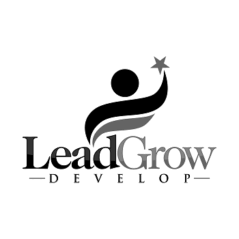Let’s be honest, social media management is nothing short of work. Posting frequently, replying to messages, tracking social media metrics, and keeping up with the ever-evolving trends is quite hectic. The workload increases with the growth of your business.
However, it is possible to maintain a social presence without burning out. The secret is automation. With the proper automation tools, you can relieve your stress, maintain consistency, and streamline brand building without feeling burned out.
This blog will simplify the process of scaling your social media strategy using automation so that time is saved, while the audience is actively engaged.
Why Scaling Your Social Media Strategy Matters
Scaling your social media strategy goes beyond increasing posting frequency; it pertains to newly reaching demographics without losing quality or consistency. A social media strategy can be scaled in a way that permits interaction with a larger audience, quicker reaction to trends, and testing different content types. It also enables more efficient growth since the growth constraints caused by manual workflows are eliminated.
Key benefits include
- Increased reach and engagement: Expanded audience through frequent content sharing improves audience reach and interaction.
- Brand consistency: Unified visuals, tone, and messaging throughout the platforms.
- Better time management: Creativity and strategy take precedence, with less time spent on repetitive tasks.
You may have to scale your social media strategy if you notice:
- Skips in posting or extended periods of silence in content.
- Branding elements such as voice and visuals do not align or are inconsistent across different social media platforms.
- Responses to customer questions are slow or not attended to entirely.
- A social media manager (or team) who feels perpetually swamped.
Primary Social Media Functions Appropriate for Automation
Social media marketing automation starts by knowing what to automate. Below are five primary areas where automation has the most significant effect:
- Content Scheduling and Publishing
Automation has made scheduling and planning advanced posting simple by creating content calendars that allow for simultaneous publishing across platforms. This method of automated social media posting guarantees a steady online presence even during weekends and public holidays.
- Social Listening and Monitoring
Social media automation tools monitor continuously across various platforms by tracking specific mentions, hashtags, and sentiments. This allows managers to get to know their audiences, competitors, and emerging industry trends without hovering on platforms, counting every single second.
- Analytics and Reporting
Manual attempts at cross-channel performance evaluation are greatly time consuming and therefore inefficient for a business. Automated dashboards and performance summaries allow fast tracking of important metrics such as engagement, reach, click throughs, and more, enabling informed decisions to be made effortlessly.
- Customer Engagement and Chatbot
Automated chatbots may support clients with frequent and simple queries, walkthrough users through issues, and issue information for your support or sales personnel. They engage customers and reduce the response time substantially on a 24/7 basis.
- Team Collaboration and Workflow Automation
Automation has taken over elsewhere, too. Workflow automation tools easily create, approve, and assign tasks, which ensure that the team operates multi-tasking, cooperatively, and effectively, even when working from different locations.
Selecting the appropriate social media tools
- Budget: Assign monetary limits to tools that offer value for your money while growing with your business.
- Platform compatibility: One of the key business focus areas on social media is braded networking, which implies that tools should be compatible with the social networks of the business.
- Usability: The more user-friendly the interface, the more likely the team will utilize the software, which also saves time on teaching them how to use the application.
- Possibility of integration: Combined functionalities make for better user experience, thus having the possibility of integration with CRMs, analytic or email marketing platforms enhances the attractiveness of the tools.
The Best Practices for Leveraging Social Media Automation
Automation can be a very useful tool—however, it should never come at the expense of losing personal touch. Use automation smartly.
- Balance automation with personalization: Have set engagement posts that can be accessed at the required time while actual conversations are carried out manually. Answering in a human vernacular increases confidence and builds trust among members.
- Curate vs. Create: Mix original pieces and content across other platforms to ensure your feed is both diverse and valuable.
- Regular audits: Check on consistent automated reviews of processes to cut back on actions that work and those that don’t.
- Set human intervention points: Use automatic reporting to signal when personal touch is required (e.g., negative feedback, VIP questions), as human intervention is marked to be placed at such points.
Concluding thoughts
Scaling does not mean increasing the volume of work done on social media. With the most suitable social media automation tools, you can increase your reach and utilize them to enhance frequency while streamlining operations at the same time. The best part is that your human interaction is not compromised.
Focus on one activity and automate it. Measure its outcome, and then gradually add more customizations. With time, your brand will remain front and center wherever customers scroll.

